It is under the pen of John Green, author of the book "The Fault in Our Stars" that we find the most beautiful illustration of what champagne can be. The writer actually puts this sublime phrase into Dom Pérignon's mouth: "Come quickly, I taste the stars". But do you know how sparkling champagne wine was born? Originally still wines, champagne wines have been able to mark their difference by cultivating the art of blending and effervescence coupled with the mastery of time to become the iconic wine that makes the whole world sparkle.
Definitely born under a lucky star and good soil
Originally, champagne wines were still wines (non-sparkling) produced in the Champagne vineyards. To optimize sales and maintain the enjoyment of their monasteries, the Benedictine monks began to improve their quality. But it was Dom Pérignon, in charge of a monastery in Reims, who would have paternity. The story should be moderated, because it should be known that bubbles form naturally in certain circumstances. What we owe to Brother Pierre Pérignon are above all new and qualitative cultivation practices from which all the Champagne Houses would subsequently benefit. In addition to its intrinsic qualities, champagne has always developed an image of opulence. It was already present when Clovis was crowned in Reims in 496 BC. It is also part of all the sacraments of the kings of France, and it is undoubtedly this monarchical "cohabitation" that made it a wine with a prestigious image. It never stopped being invited to royal tables, until the decree of Louis XV in the 18th century authorizing the transport of champagne - and only champagne - in glass bottles instead of wooden barrels. A small revolution because wood tended to let gas escape while glass better preserves the effervescence and makes it more elegant. At that time, champagne was cultivated on 50,000 hectares.

Champagne or the art of sparkling
It is at the heart of its DNA, this famous effervescence. Moreover, before being called champagne wines, it was customary to call a sparkling wine a saute-bouchon, a name perfectly summarizing this power of opening the bottle boosted by the presence of carbon dioxide. For a long time, men wanted to eliminate this effervescence induced by the transformation of sugar into alcohol and gas. Consumers did not want it, until it finally found its audience, and in particular the English monarchy which fell in love with this beverage so "in tune" with the festive spirit they demonstrated. Effervescence was in fashion, everything sparkled at that time. In the years 1660-1690, the birth of sparkling champagne wines marked an upheaval for sparkling wines.
For the first time, a sparkling wine was associated with a very specific terroir and specific winemaking techniques were finally developed to "tame" or rather enhance the bubbles. The grape variety has also evolved a lot over time. Several estates also produced wines called vins gris. They had the unique feature of being made from grapes with black skin and white flesh to give life to... a white wine, which never ceased to amaze observers. The fruit of a long work of cultivation, selection, harvest and processing. Today, champagne is mainly composed of Pinot Noir, Pinot Meunier (both with black skin and white flesh) and Chardonnay (white skin and white flesh).
Under the Empire, the emergence of the great Champagne Houses

Under Napoleon's leadership, the champagne industry was structured around large Houses that would contribute even more to its international growth. The Canard-Duchêne house was part of this lineage by joining the exclusive circle of sparkling wines served at the table of Tsar Nicholas II. At the dawn of the industrial revolution and with the development of international transport, champagne became the undisputed king of sparkling wines throughout the world, and even the symbol of a "French" art of living. It was also associated with major events such as the great universal exhibitions of 1789 and 1900 in Brussels and Paris.
It lost some of its power during the First World War, when it suffered an attack of phylloxera, but came back in force as soon as the crisis was over and never disappeared again. An adventure wine, it was present during the inaugural flights of the Concorde or during the Channel Tunnel junction. Writers also praised this sparkling beverage, from Hemingway who liked it in a cocktail married with absinthe, to François Sagan who sprinkled it throughout his novels, to the very contemporary Amélie Nothomb who does not hide her attraction to fine vintages.
Today its cultivation extends over 33,000 hectares. Its appellation delimits a very specific geographical area in which the grapes must be cultivated and the wine produced. Outside this area, the wine cannot bear the Champagne appellation. It takes approximately 1.2 kilos of grapes to produce a bottle of champagne. Since its creation, champagne wine has never ceased to be knighted in the four corners of the world, accompanying the greatest celebrations as well as more confidential moments. An exceptional success of rare longevity and remains the absolute reference of elegance.




